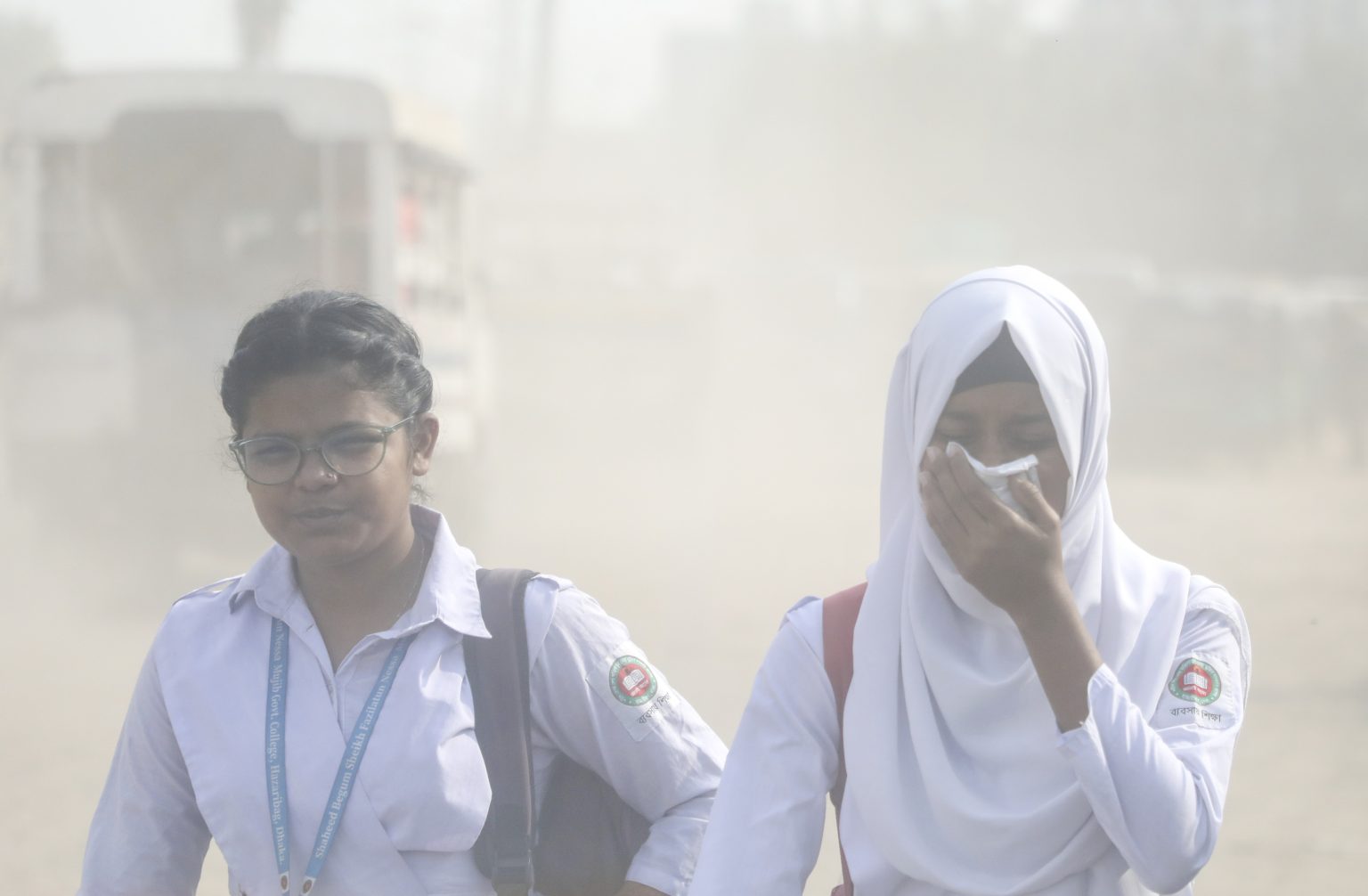Dhaka, which ranks as the third most polluted city, and Bangladesh, the second most polluted country, put thousands of children at risk of death and lifelong disease, experts have warned.
Toxic air is harming the neurological development of children and damaging their cognitive abilities, while also triggering respiratory inflammation that leads to pneumonia, bronchiolitis, asthma, bronchitis, and chronic illnesses.
According to the latest Global Burden of Disease report by the Institute for Health Metrics and Evaluation in Washington, over 19,000 children under five die every year in Bangladesh due to air pollution.
Household air pollution, especially from cooking with wood, cow dung, and other solid fuels, is a major contributor to these deaths. In rural areas, where cleaner fuels remain scarce, children exposed to smoke are at severe risk of pneumonia and respiratory infections.
Across South Asia, similar household air pollution is responsible for at least a quarter of all neonatal deaths.
The International Centre for Diarrhoeal Disease Research, Bangladesh (icddr,b), identified six major non-communicable diseases affecting children in Bangladesh: bronchial asthma (affecting 37 percent of children), thalassemia and iron-deficiency anaemia (28 percent), congenital heart disease (19 percent), epilepsy (14 percent), nephrotic syndrome (2 percent), and type-1 diabetes (1 percent).
Child health experts have also raised the alarm.
Professor Dr Abid Hossain Mollah told the Times of Bangladesh: “Our children are growing up in a toxic environment. They breathe 40 times per minute while adults breathe 20 times. That means their lungs are being infected twice as fast.”
He noted that 25 percent of under-five children are suffering from pneumonia, and asthma prevalence has climbed to 8 percent.
The 2024 State of Global Air report found that in countries like Bangladesh, 40 percent of deaths among children under five due to lower respiratory infections are linked directly to air pollution.
Dr Ahmad Parvez Zabeen, a public health expert, reminded that air pollution is a major public health problem for Bangladesh.
“Children in our country are particularly affected by household air pollution. In rural areas, cooking is often done with wood and fossil fuels, and the smoke from this is extremely harmful to children and plays a major role in child mortality,” he told the Times of Bangladesh.
He said: “This burned smoke produces carbon monoxide, which can enter children’s bodies through respiration and pose severe health risks. In addition, our outdoor pollution contains lead and CFCs, which also affect children.”
The icddr,b recently reported in a study that the risk-prone non-communicable diseases among children were identified through an integrated and evidence-based approach.
For this, in 2024, Bangladesh for the first time developed a national treatment service protocol for the management of childhood infectious diseases. On 10 February 2025, this model was implemented in 12 upazila health complexes in Kishoreganj and 8 in Bagerhat, as well as in two district hospitals.
Through this, necessary healthcare for children aged 0–17 years can be integrated into primary healthcare centres.
Dr Alia Nahid, senior scientist at icddr,b, told the Times of Bangladesh that this research laid the foundation for a sustainable and scalable model for managing childhood NCDs in the Bangladesh context, which will safeguard not only children’s current health but also their prospects for a healthy and productive future.
When asked what more steps should be taken, public health expert Dr Ahmad Parvez Jabeen said that to protect against air pollution, it is not enough to use masks; more trees must be planted to prevent pollution, and children should be kept in a pollution-free environment.
Professor Dr Shah Ali Akbar Ashrafi, former Director of the Management Information System of the Directorate General of Health Services and former Line Director of Health Information Systems and e-Health, told the Times of Bangladesh that leaflets created through community clinics should be used to raise awareness among mothers and guardians and to encourage those affected by non-communicable diseases to seek treatment.
The interim government has pledged a mix of short-, medium-, and long-term plans to curb air pollution.
It identified poor-quality roads and old vehicles as major culprits.
Syeda Rizwana Hasan, Adviser to the Ministry of Environment, Forest and Climate Change, said that a target has been set to complete the repair work on all unpaved and damaged roads in the capital before winter arrives.
“Measures will be taken to cover soil on the roads and spray water to reduce dust pollution. One of the major causes of urban air pollution is old and high-emission vehicles. The Bangladesh Road Transport Authority (BRTA) has undertaken an initiative to remove old vehicles and add 250 new environmentally friendly vehicles,” she said.
Public health experts recommended stronger emission controls, a transition to clean fuels, and expanding antibiotics and pneumonia vaccines in underserved areas to save children’s lives.
If urgent measures are not taken to prevent pollution and improve respiratory healthcare, the progress achieved in Bangladesh’s health sector could stall or even reverse, they warned.
Among the policy recommendations from them are: transitioning to clean fuels, enforcing strict emissions controls on vehicles and factories, and expanding access to antibiotics and pneumonia vaccines in underdeveloped areas.


